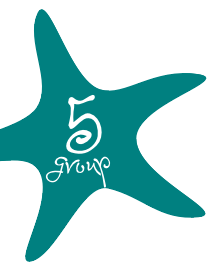

These are the set procedures followed when processing chemical data from the Callista, Conway and Pontoon.
The concentration of oxygen was determined by using a sodium thiosulphate titration. There are several pieces of information required to carry out the titration, these are; the normality of sodium thiosulphate (0.22), the temperature and salinity of the sample when taken, the bottle number/ bottle volume and amount of sodium thiosulphate required for the reaction to take place.
The method: Add manganese chloride and alkaline iodide to the sample when taken to fix the oxygen. Add 1ml of sulphuric acid to the bottle, add stir bar to get clear rust colour (no precipitate visible). Sodium thiosulphate was slowly added and a light meter was used to measure colour. An automated burette was used to add thiosulphate. Once the reaction had finished the solution went clear, the light meter readout was used to assess when the reaction had finished completely. The values were then inputted into a conversion spreadsheet to give percentage saturation and concentration.
The concentration of chlorophyll was measured using a fluorometer. The water samples to be analysed were filtered using a syringe and filter paper. The filter was then placed into a tube of acetone. These steps were carried out in situ. The samples were placed into a freezer overnight, then sonicated to release the sample from the filter. The acetone was transferred into a cuvette without the filter paper and placed into the fluorometer. The concentration value was calculated using the formula;
(6ml (amount of acetone) ÷ Xml (amount of water filtered)) x value shown on fluorometer
The flow injection method was used to analyse nitrate concentration. The samples were placed into a glass bottle in situ. Once in the lab the sample was loaded into the carrier stream with several reagents; 0.4m NH4Cl, 0.3m NaCl, 0.1% NaOH, 1% sulphanilamide. The spectrometer was used to measure the light passing through and produced a readout with peaks on. The peak heights were measured and a spreadsheet was used to convert the peak height to concentration.
The spectrophotometer was used to determine the concentration of phosphate. The water samples were placed into a glass bottle in situ. A reagent was added to the samples which were then allowed to stand. The samples were loaded into a 30ml cylinder cell for wavelengths of 882.0nm and the conversion graph was used to calculate concentration.
Samples were placed into plastic bottles and poisoned with mercuric chloride in situ. After using the standards to calibrate the spectrophotometer, 6ml of ammonium molybdate reagent was added to the samples and replicates and they were allowed to stand for 10 minutes. After this 9ml of mixed reducing reagent to each sample and they were allowed to stand for 2 hours. The samples were then run through the spectrophotometer at 810nm and the conversion graph was used to calculate concentration.
Water to be sampled for phytoplankton was placed into a glass bottle with Lugols iodine solution in situ. In the lab the sample was pipetted into a Sedgewich rafter cell so it filled 5 columns and 20 rows. The number and type of phytoplankton in the cells were counted using the microscope.
The water that was to be sampled for zooplankton was placed into a plastic bottle
and 50ml of 10% formalin was added. In the lab 10ml of the re-
The views expressed here are not necessarily those of the University of Southampton, National Oceanography Centre or Falmouth Marine School.